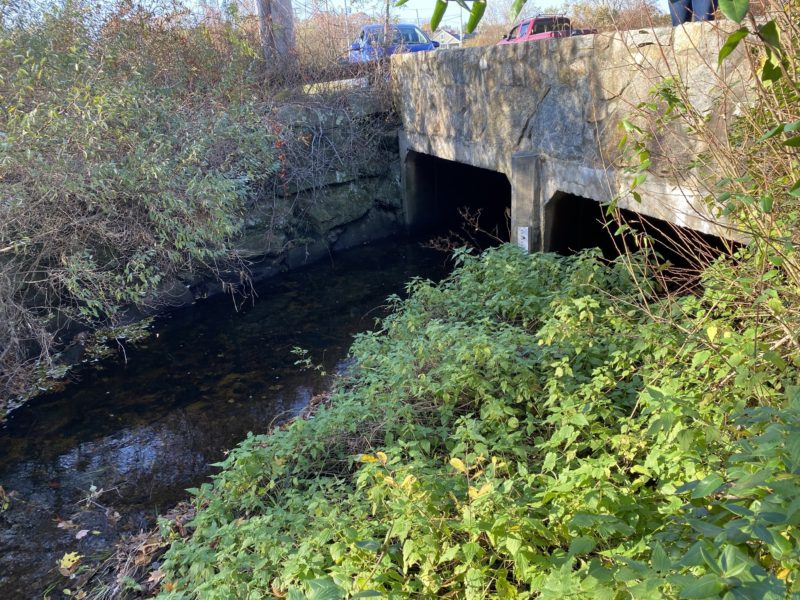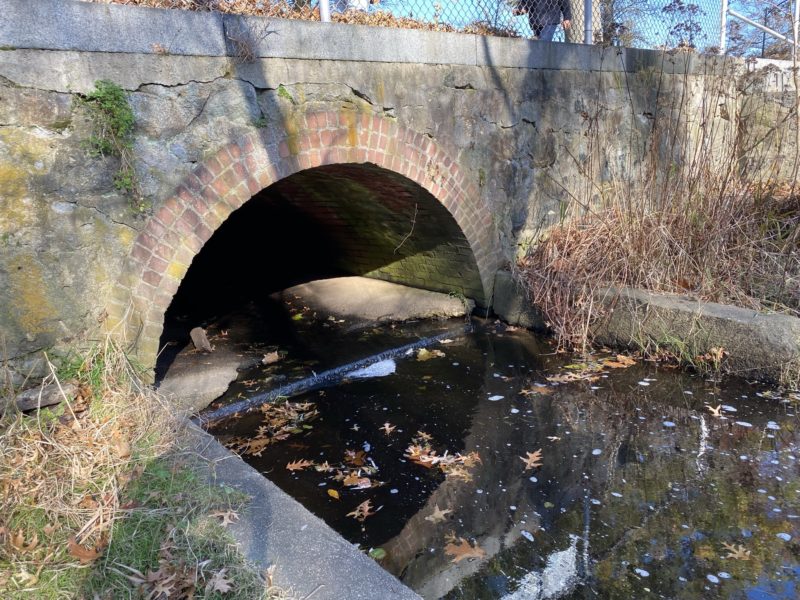Buttonwood-to-Bay: Introducing the Buttonwood Brook-Apponagansett Bay Restoration Project
“The time has come for science to busy itself with forests, streams, and marshes. The first step is to reconstruct a sample of what we had to begin with.” Aldo Leopold: American Forester, Conservationist, and Author
Background
In urbanized areas across America, small streams and brooks have been overlooked or forgotten. Pushed to the background and stressed by urban development, these precious resources lose their natural ability to reduce contamination, prevent flooding, support wildlife, and improve the aesthetics of our daily lives. Streams are a crucial part of Earth’s circulatory system, and despite being a small portion of the Earth’s surface, they support an enormous amount of the world’s biodiversity. Healthy streams foster healthy rivers and bays.

The Problem
Streams interact with a lot before eventually emptying into downstream water bodies. Buttonwood Brook is the most significant freshwater stream feeding into Apponagansett Bay, or Padanaram Harbor, in Dartmouth. Unfortunately, water quality in Apponagansett Bay consistently ranks in the bottom 10% of all 30 major harbors and coves in the Buzzards Bay watershed. Contaminated runoff and sediment from streets, parking lots, and lawns, combined with aging sewer and drainage infrastructure are directed into the brook channel and progressively degrade water quality along its journey to the bay. At the same time, alterations to its natural flow like culverts, dams, and channeling reduce the brooks’ ability to absorb significant rain events effectively. These development-related impacts lead to high nitrogen pollution and bacteria levels, increase the risk of “flash”, or rapid, flooding, and negatively impact local wildlife.
Why it Matters
Water quality in our streams and coastal environments directly impacts area residents’ health, economic vitality, and quality of life. Exposure to pollutants is a risk to public health and directly impacts our lives when area beaches, ponds, and fisheries are closed by State officials due to contamination. Pollution also significantly affects wildlife, including commercially and recreationally important marine species like quahogs, scallops, flounder, and striped bass. Lastly, channeling stormwater that carries pollutants and sediment into the brook creates flashy conditions that erode stream banks, increase the risk of flooding in our neighborhoods, and prevent recharge of precious groundwater supplies.
Solutions
Community partnerships are a hallmark of Buzzards Bay Coalition projects. The Buttonwood-to-Bay Restoration Plan is no different and will bring a diverse group of local stakeholders together to tackle the issues discussed here; Project partners include the City of New Bedford, the Town of Dartmouth, the Buzzards Bay National Estuary Program, Buttonwood Park Zoo, Friends of Buttonwood Park, Woodwell Climate Research Center, Marine Biological Lab, Woods Hole Oceanographic Institution, and the Dartmouth Natural Resource Trust. Initial funding for the project is provided by a 5-year grant from the US Environmental Protection Agency’s Southeast New England Program.
This Project seeks to improve water quality in both the brook and the bay by taking a phased approach that includes data collection, analysis and planning, and implementing on-the-ground restoration projects. Over the next two years, the BBC and its partners will conduct field studies to collect scientific data on water quality and ecosystem health. In addition, BBC staff will evaluate the brook’s physical condition and identify potential sources of pollution. In year three, project partners use that information to identify and prioritize sites for implementation of pollution cleanup and/or brook restoration projects. Finally, in years four and five, BBC and its partners will work with specialists in stormwater management and stream restoration to implement targeted interventions that reduce pollution from runoff and restore natural flows to the most impaired sections of Buttonwood Brook.
Happening Now
Starting in March we’ll begin multiple field collection activities that include sampling water quality and monitoring water levels at various sites along the brook. BBC and project partners will also be out walking the brook to assess physical conditions and the flow of water. These activities will continue throughout the year and will provide baseline information that is critical to identifying and prioritizing areas in need of restoration. To prepare for all this work, the BBC has sent out letters to inform anyone who owns property or resides near the brook that staff may be in your area collecting data.
As always, the BBC will engage local communities and key stakeholders throughout the project to keep all parties informed, encourage participation, and directly address questions or concerns. The Buttonwood Brook and Apponagansett Bay are essential parts of our local landscape and natural heritage, let’s work together to preserve these precious resources for generations to come.
Buttonwood Brook Map